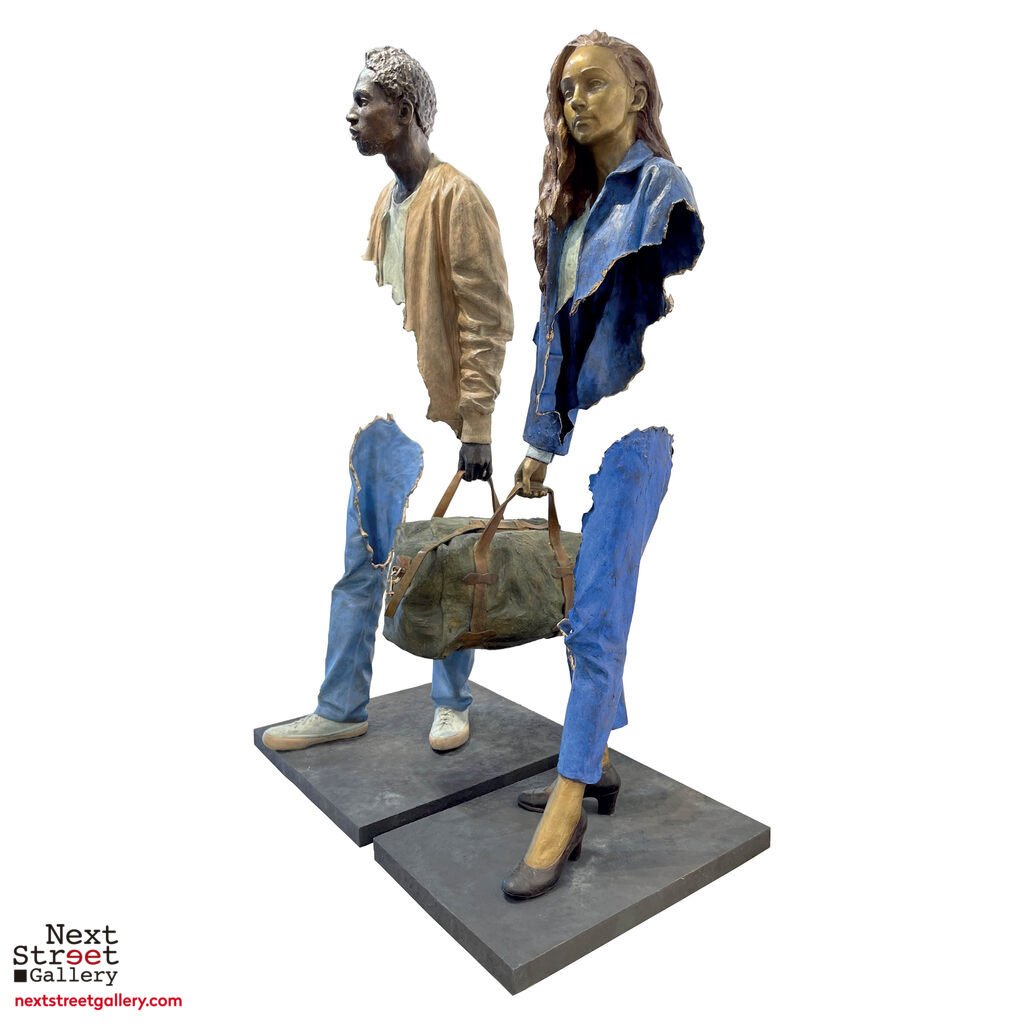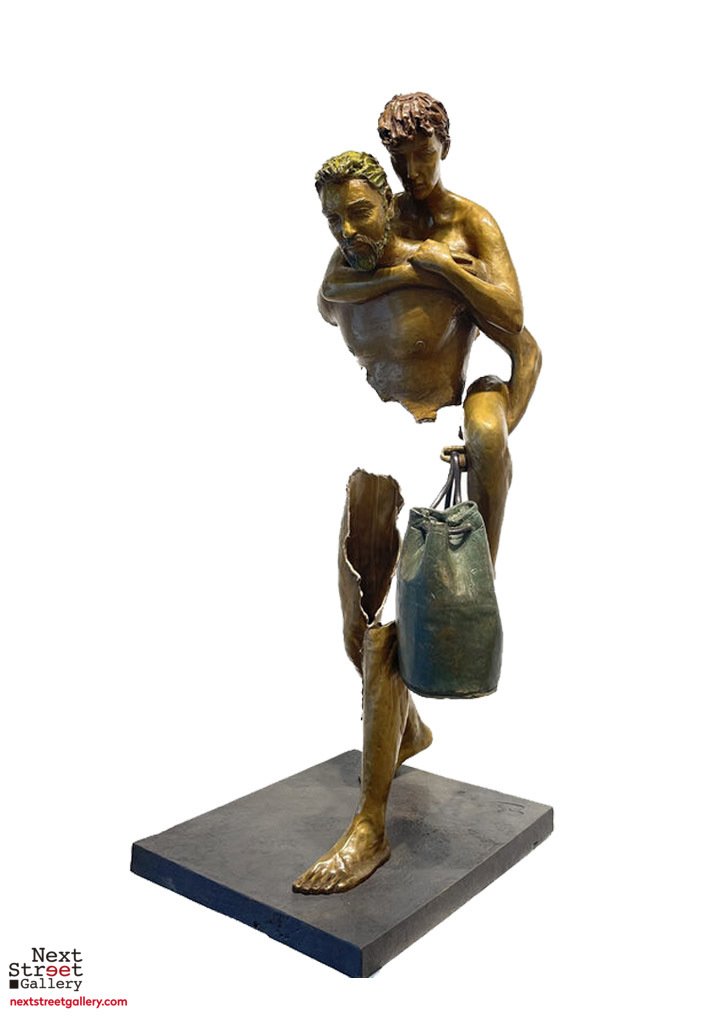Bruno CATALANO
ABOUT
As an artist of travellers, Bruno Catalano makes a stopover from face to face for the duration of a sculpture, seeking to capture in each of his models the singular baggage that he carries with him. The series that has become emblematic and that he continues to work on today began in 1995 as the resolution of a family epic and the new beginning of an artistic adventure.
When he was born in Morocco in 1960, he was already the product of various journeys. His family, of Franco-Italian origin, had Jewish ancestors who were expelled from Spain in the 15th century and took refuge in Sicily before settling in North Africa. He was ten years old when they left the country to settle in Marseille. Then, trained by his father as an electrician, he began his professional life at the age of twenty by working on boats for a shipping company, then joined the SNSM. He is still far from art, but this experience will remain a determining factor in the construction of his sensitivity. It was with friends that he first discovered leather masks, then he devoted himself to clay from 1991. Determined to master this material, he enrolled in a modelling and drawing workshop, and completed his self-taught training by reading. Step by step, Bruno Catalano set up his own workshop, acquired his own kiln, and finally made sculpture his main activity.
It gained official recognition when, in 2001, the town hall of the 5th arrondissement of Marseille entrusted him with the execution of a bust of Yves Montand to decorate the square dedicated to him. He thus inaugurated a production of public works of art that would become the core of his work.
During all this time, Bruno Catalano has never stopped wanting to perfect his representations, to seek ever more accuracy and truth in the expression of his figures. However, his practice took a new turn when, in 2004, a formal invention invited itself into his studio. A simple accident in the casting of metal opened a breach in the body of the sculpture and in the artist’s habits. He decided to seize this accident and made this tear in the material a central element in the production that followed. From the figurines of his beginnings, he began to produce increasingly monumental figures, reaching several metres in height, always in bronze and sometimes enhanced with colour. Today, he continues to be a sculptor in the full sense of the word, i.e. in touch with the physical matter that makes up his works as much as with the impalpable matter that shapes human existence.
ALBEN • AMAURY DUBOIS • ANDY WARHOL • ARMAN • BANKSY • BEN FROST IS DEAD • BEN VAUTIER • BOB TONIC • DAMIEN HIRST • DRAN • GULLY • HERR NILSSON • HUANG YULONG • INVADER • JEFF KOONS • JOE SUZUKI • KURAR • LIU BOLIN • MARIO MATERA • MOHAMAD ESKANDARI • MR.BRAINWASH • NUNO VIEGAS • PAUL SIBUET • PHILIPPE PASQUA • PIMAX • PIPSQUEAK WAS HERE • RENAUD DELORME • ROBERT COMBAS • ROAMCOUCH • ROY LICHTENSTEIN • SENY • SHEPARD FAIREY • SNIK • T-KID • TAKASHI MURAKAMI • VICTOR VASARELY • VHILS



